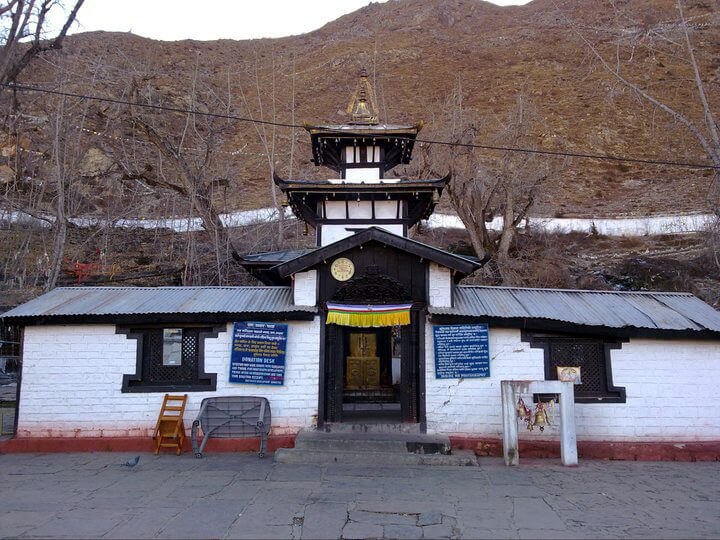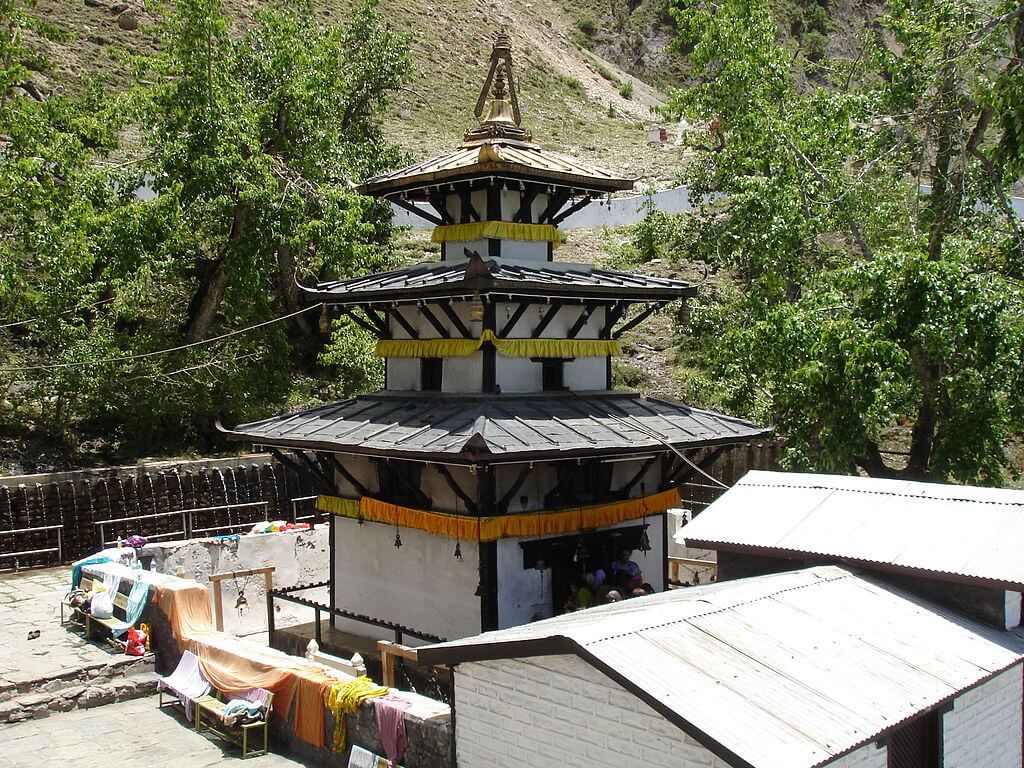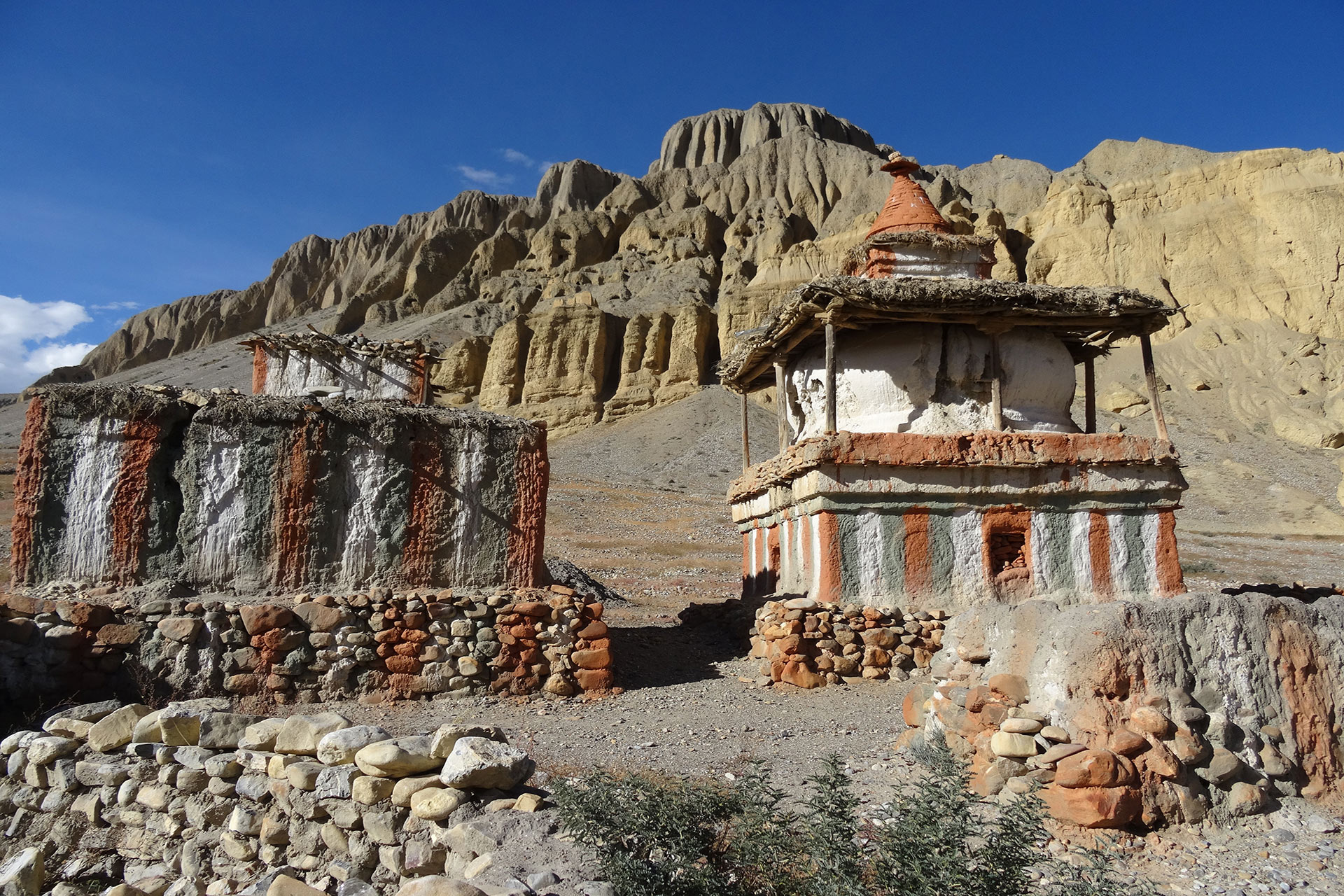Muktinath Temple, a sacred place both for Hindu as well as Buddhist, is located at height of 3749 metres (one of the highest situated temple in the world) at the foot of the ‘Thorong La‘ mountain pass (part of the Annapurna Himalayas), Mustang district, Nepal. Muktinath temple is a pagoda-style dedicated to Lord Vishnu. The temple is situated 24 km northeast of Jomsom, which lies in the Annapurna Circuit. Hence, the temple gets plenty of visits from trekkers trekking around the Annapurna Circuit. The temple is situated on a high mountain range and is visited during fair weather. The Hindus call the place “Mukti Kshetra” which literally means the “place of salvation“, while Buddhists call this valley “Chumig Gyastsa” (in the Tibetan language it means the place of 108 waterspouts). Muktinath is one of the most ancient Hindu Temples of God ‘Vishnu‘. It is the most prominent shrine ‘Vishnu’ temples with 108 spouts, fashioned in the shape of cows heads, pour forth water that is considered to be holy. This water is channelled from a stream running above the temple. The temple is considered to be one of the eight sacred places known as Svayam Vyakta Ksetras (the remaining seven are Srirangam, Srimushnam, Tirupati, Naimisharanya, Totadri, Pushkar and Badrinath), as well as one of the 108 Divya Desam, or holy places of worship Lord Vishnu. In addition, it is also one of 51 places to worship Shakti Pitha goddess sites. The temple is built in pagado style and contains huge brass idols of Vishnu, Shiva, Brahma and Kali.
In Muktinath, there is a rock fissure, from which water and natural water and natural gas is pouring. The gas burns are very tiny flame, but there is a natural combination of all four elements, earth, water, air and fire at one spot. Because of this pilgrims have been visiting over 3000 years to this holy place.


During the festival of Janai Purnima, Hindu devotees gather here to pay homage to lord Muktinath. The visitors get lodging facilities at Dharmasala and Maharani Pouwa. There are two temples of note, a dilapidated temple with the idols of Lord Shiva and his consort Parvati, and a Narsingh temple where rituals are performed according to both Hindu and Buddhist customs. There is also Buddhist gompa (monastery), and a pagoda-type temple dedicated to Jwala Mai (goddess of fire) is situated about hundred meters south of Muktinath.
Muktinath has a supernatural as well as a historical dimension. In the Jwala Mai temple, pilgrims worship a never-ending flame, fuelled by natural gases deep in the earth’s core, which appears to burn on top of a water spring. It represents ‘Agni’, the fire god, a crucial element in Hindu Vedic ritual. Whilst the temple complex is predominately Hindu, local Buddhists and animists also worship there, attributing the natural miracles to the work of their own gods. It is locally believed, for example, that the saint Padmasambhava responsible for bringing Buddhism to Tibet, visited Muktinath in the 8th century.





